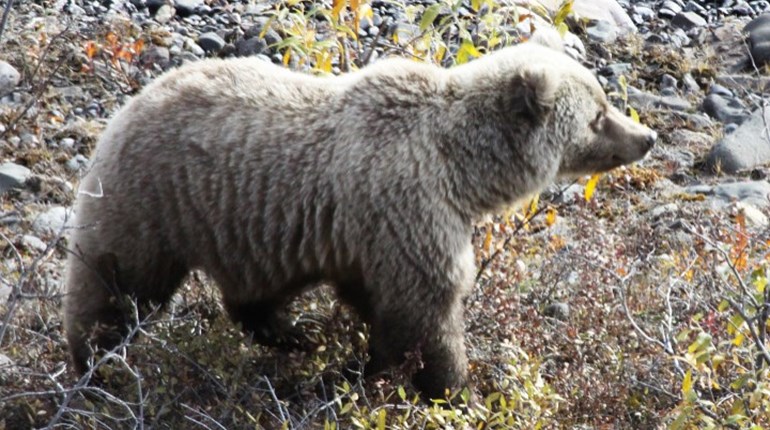
If you consider yourself a shotgunner, and have not yet experienced dove hunting, you’re missing a ton of fun! Not only is there plenty of shooting, but the seasons for doves are open during late summer and early fall when the weather is mild, sometimes downright hot. Another advantage of this shooting sport is that the equipment needed to get started is minimal—everything except your shotgun will fit into a 5-gallon bucket. Just spray paint a plastic pail camo colors, add a padded swivel seat, and you’re ready to hunt...well, with these 10 things in the bucket, of course.
1. Eye & Ear Protection: These two items should always be your top priority. No shooter would consider going to the range to crush a round of clays without wearing proper eye and ear protection, so why would you not wear them while dove hunting? A good pair of electronic ear muffs allows you to hear your buddy’s creative and possibly colorful excuses as to why he missed an easy shot, yet they also cut off the high-decibel sound of a shotgun blast. And if you don’t already wear glasses, a pair of safety or shooting glasses will protect your eyes should someone across the field not resist the temptation of shooting at a low-flying bird. It’s something that should never happen in a dove field, but believe me it does.
2. Ammunition (take plenty of it!): Yes, extra ammo is heavy to carry in the field but don’t skimp here. Pack at least two boxes of shotshells per trip. Even if you don’t use it all, a buddy may have forgotten his ammunition or run short and you can be a hero by sharing yours.
3. Pruning Shears: Use these to trim away briars, small saplings and larger weeds from your shooting location. A pocketknife will work in a pinch, but shears do the job more quickly and efficiently. Hint: When clearing a shooting spot in a fencerow, beware of poison ivy!
4. Dove Decoys: Many hunters use a rotating-wing dove decoy—either electronic or wind-driven—to add movement to their hunting location, hoping doves will believe that other doves are already feeding. The decoy attaches to the top of a short metal stake pushed into the ground. (If you choose the electronic decoy version, don’t forget to check your local laws about electronic decoys, and pack extra batteries.) Clip a few roosting-dove decoys to a nearby fence or dead tree limbs, and your decoy set is complete.
5. Insect Repellent: Few things in the outdoors are more irritating than mosquitoes, but swatting them while trying to hunt doves is one of them. I prefer the moist towelettes rather than the spray-on variety of repellent, because you have better control of where on your body it goes.
6. Water & Snacks: Just like carrying extra ammo, water can be heavy, but staying hydrated allows you to continue hunting comfortably for longer periods. As for snacks, consider granola bars or energy bars rather than candy; chocolate quickly softens or completely melts on hot days, creating a mess.
7. Hunting License & ID (and signed Permission Slip if hunting on private property): These are no-brainers, but don’t make the mistake of leaving them at home or in your vehicle. Should the local wildlife officer show up you want him or her to find everything in order.
8. Sunglasses: A pair can be indispensible should you be forced to look in the direction of the sun for incoming doves. You can try changing your shooting location to solve the problem, but sometimes there is no other way to effectively hunt a particular field.
9. Plastic Grocery Bags: Once the hunt is over and it’s time to pack up, these sacks come in handy for toting both empty shell casings and doves from the field. Place your empties in the bag first, then add the dead doves on top. Once you get home it’s a simple matter of removing the doves for cleaning, then recycling or reloading the shell casings, and disposing of the plastic bag. Just don’t leave doves in plastic for long, as the birds can quickly spoil on a hot day.
10. Toilet Paper: A small roll should do. Use this for field emergencies, such as when that super-sized breakfast burrito you ate earlier in the day suddenly begins to take full effect.
Don’t get discouraged if at first you’re not hitting many doves; possibly none. It’s not easy shooting. In his book titled Dove Hunting, Charley Dickey makes this statement, “Depending upon which survey you believe, it takes the average hunter five to eight shells to pick up one dove.” Dickey’s book was published in 1976, but I doubt that the shooting percentage is any different today.
Why is dove hunting so tough? Several reasons. Unlike clay targets at a shooting range, in dove hunting you have no idea where or when the birds will appear. And when they do fly past they may be speeding up, slowing down and may or may not fly within range. You’re forced to quickly judge yardage while making split-second decisions whether or not to shoot. To add to the confusion, doves can fly 35 to 45 miles per hour, even faster with a tailwind. It’s enough to rattle any shooter, no matter how much prior experience he or she has had with clays. The solution is simply to keep shooting. Birds will eventually begin to fall.
Depending upon what region of the country you hunt, most of the shooting will be at mourning and/or white-winged doves—so make sure you can identify these birds on the wing. The Eurasian collared dove, a species not native to North America but now considered a legal game bird here, is making up more of the bag in some areas in recent years. Introduced into Florida in the late 20th century, populations of these birds are on the increase and moving northward at astounding rates.






































